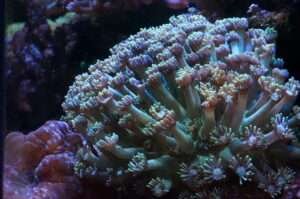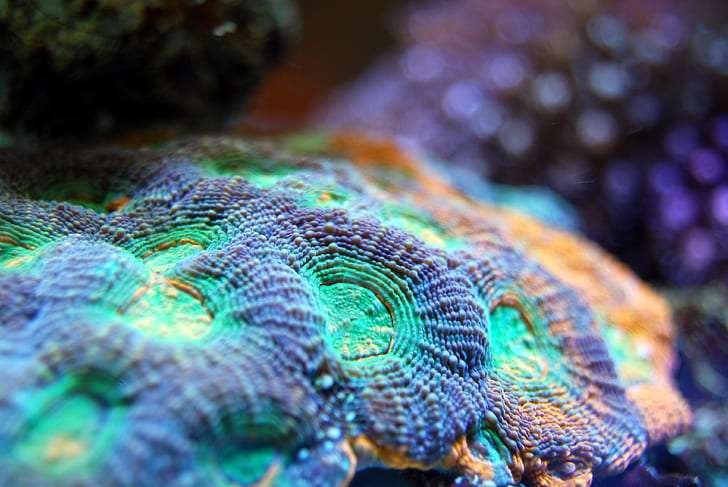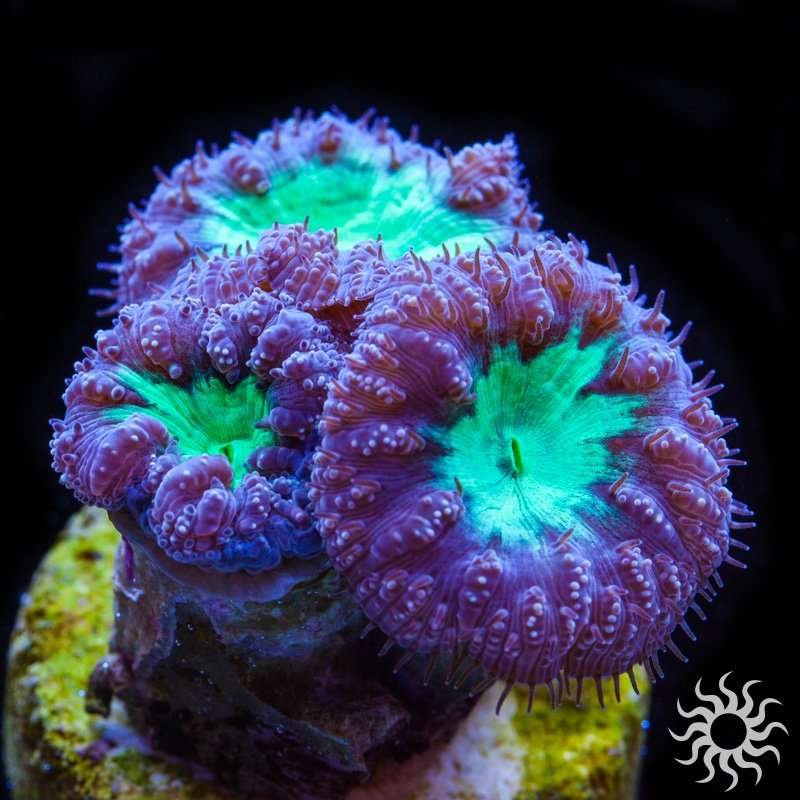HOW TO BEGIN LPS CORAL CARE

LPS corals are interesting because they are stony corals but have big soft polyps and a hard frame made of calcium carbonate. These corals get their name from the big, colored growths on their bodies called polyps. The polyps can get longer when the corals eat. It’s easier to take care of LPS corals than SPS corals because they don’t need as much water flow or bright lights and don’t mind changes in the water as much. They are great for people who are just starting out because of this. There are a lot of beautiful colors and forms of LPS corals, from dome-shaped to branched corals. Some can get up to a foot long. It’s still possible for LPS corals to get pretty big, though. They don’t grow as fast as SPS corals. A few well-known LPS corals are torch coral, frogspawn coral, hammer coral, and bubble coral.
The state of the water around LPS coral
To keep your LPS corals healthy, it’s important to make sure the water stays in the right states. That’s because changes in the water can make them sick or stressed out. In the water, these are the most important things to watch out for:
How warm is the water around LPS corals?
The water temperature should stay steady between 75 and 80 degrees Fahrenheit.
Things should have a specific gravity of between 1.023 and 1.025.
The best pH range for LPS corals is between 8.1 and 8.4.
The alkalinity level should stay between 8 and 12 dKH to keep the pH level fixed.
Calcium: The amount should stay between 400 and 450 ppm because LPS corals need it to build their calcium carbonate shells and grow.THE PARTS OF LPS
Besides the above water conditions, you also need to keep the following levels:
A nitrate level of less than 15 parts per million
There is less than 0.2 ppm of nitrite.
Phosphate is less than 0.15 parts per million.
There is no ammonia in it.
Coral lights from LPS
When you put LPS corals in your reef tank, you should make sure they get low to moderate lighting. As long as they don’t get too much light, they’ll be fine. But if they get too much light, it could make them sick or even kill them. Bright lights can also cause coral to brown.
As long as the light level is between 50 and 150 PAR, it should be fine for LPS corals. Choose a good LED light fixture for your LPS coral tank. These lights let you better control the colors and range and use less electricity. But you can also use T5 or metal-halide tank lights.
Important: Try putting your LPS in the tank before putting them in to get them used to the light. Bring them down in the water scene and slowly raise them until they reach the end.
Water from LPS flows around coral.
LPS corals need water that moves slowly and moderately. They don’t do well in fast-moving water like SPS corals do. Too much flow can stress them out and hurt their fragile polyps.
Water should flow through your tank five to ten times per hour for LPS corals to stay healthy. You should use a powerhead or wave maker to make a gentle flow through your LPS coral tank.
WHAT SHOULD YOU GIVE LPS CORALS?
Plant-based foods like algae are what LPS corals get most of their energy from, but they can also eat meaty foods like shrimp, krill, and mysis, as well as protein-rich pellets or flakes. Even though it’s fun, make sure you don’t get stung when you feed LPS corals. You should only feed your LPS corals as much food as they can eat in 10 to 15 minutes, two or three times a week. Too much food can make the water dirty and spread diseases to coral.
LPS DISEASES OF THE CORAL
LPS corals can get sick, just like any other marine life. As for LPS corals getting sick, the most common ones are bacterial infections, fungus infections, and parasites. Keep an eye out for these signs that your LPS corals might be sick:
loss of color; polyps that don’t grow enough
loss of tissue
Coral with white spots or patches
Tissue death that is slow or fast
As soon as you see any of these signs, you should move right away. First, check the parameters of your water to make sure they are in the right area. Also, look over your LPS corals for any white spots or patches that could be signs of disease. If you think that one of your LPS corals has a disease, you should separate it from the others and treat it with a coral dip or medicine.
The best place to treat your coral is in a medical tank, away from the main aquarium, so it doesn’t spread disease to other animals in the tank.
LPS CORALS ARE GOOD FOR BEGINNERS
Here are some corals that are great for people who are just starting out with the hobby:
Brain Corals, Candy Cane Coral, Torch Coral, Hammer Coral and Bubble Coral
LPS corals are a beautiful and interesting group of sea organisms that are easy to take care of and great for both new and experienced aquarium keepers. You can keep your LPS corals happy and healthy in your tank by keeping the water stable, giving them low to moderate lighting and water flow, and making sure they have a healthy diet.
Always keep an eye on your LPS corals for any signs of sickness and act right away if you see any. Your LPS coral tank can be the most beautiful thing in your home if you take good care of it.


